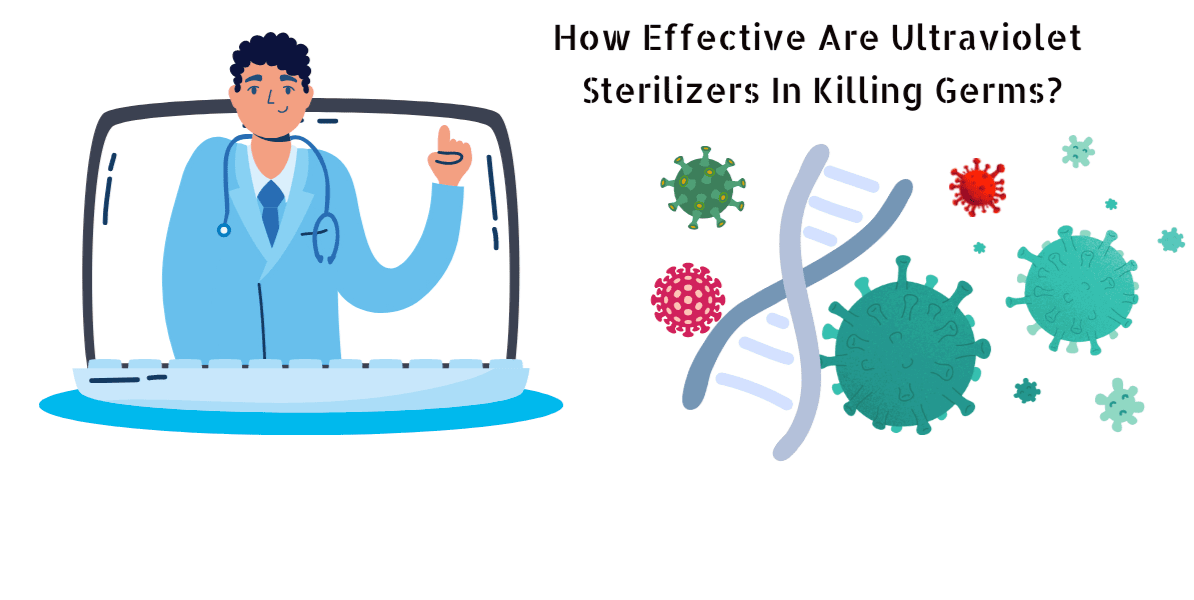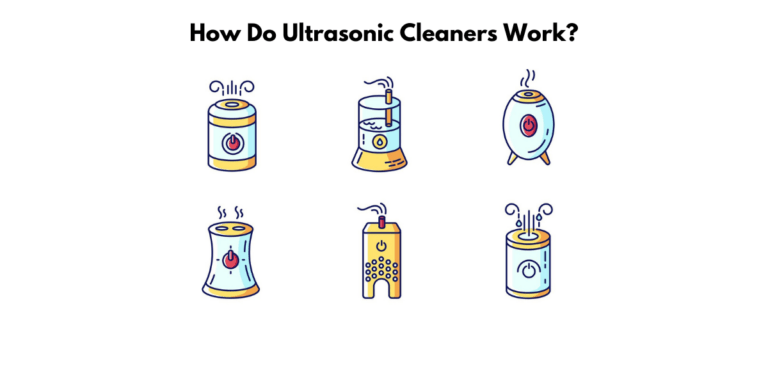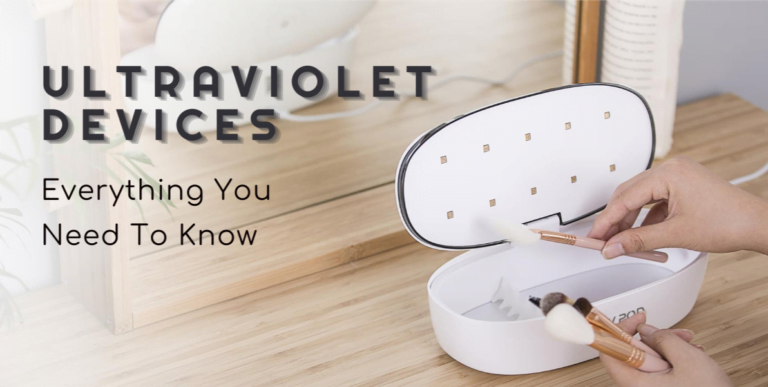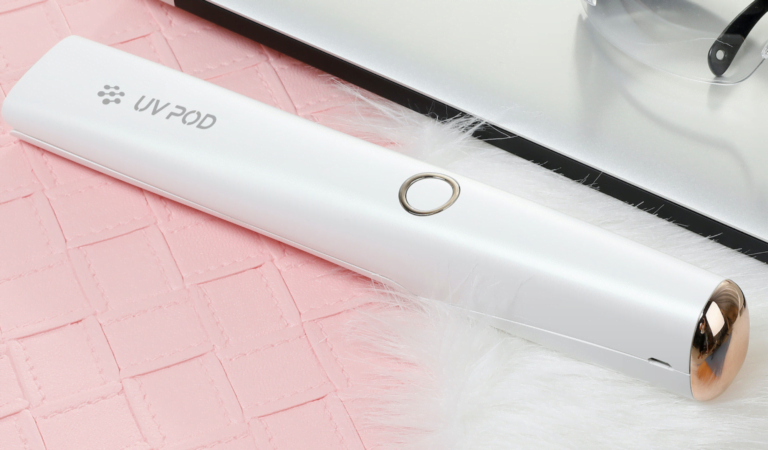Far-UVC Amazon Lights: The effectivity of UVC technology and everything else you need to know
UVC Technology: Far-UVC Amazon Lights
Have you ever heard of Far-UVC lights? Probably not, but after reading this blog post, you will know all about them!
Far-UVC lights are a type of ultraviolet light that is effective at killing bacteria and viruses without harming human skin or eyes.
While regular UVC lights are dangerous to humans, Far-UVC lights have a very limited range and cannot penetrate the outer layer of human skin or the tear layer in our eyes.
This makes them much safer for human exposure, and there is potential for them to be used in public spaces like hospitals, schools, and office buildings to help prevent the spread of infectious diseases.
Amazon recently announced that they are now selling Far-UVC lights on their website, so we thought we would write a blog post about it!

What is Far-UVC UV light?
Far-UVC is a type of ultraviolet light that operates at a wavelength of 7 nanometers. This ultraviolet light has distinct advantages over conventional germicidal lights and is now available as fixtures and lamps. Far-UVC has been fast-tracked for various applications, offering an effective alternative to traditional UV lighting solutions.
The benefits of using UVC technology
UVC technology offers many benefits, including the ability to disinfect surfaces without the use of chemicals, improved air quality, and reduced energy consumption.
We all know how important it is to keep our homes well-lit, but did you know that there are now lights available that can help improve your health?
Far-UVC lights emit a special kind of ultraviolet light that effectively kills bacteria and viruses without harming human skin or eyes.
Let’s look at some of the benefits of using Far-UVC lights in your home.
Far-UVC lights can effectively kill 99.9% of bacteria, germs, and viruses
The benefits of using Far-UVC lights include their safety for skin and eyes and their ability to disinfect rooms continuously without needing to be turned on and off. Additionally, Far UVC of the 222nm wavelength and below is being researched as a potential alternative to conventional germicidal lights of the 253.7nm wavelength.
Far-UVC lights are ozone-free and safe to use in enclosed spaces, making them ideal for home, office, and other public places
Far-UVC lights differ from other UV lights in that they emit a shorter wavelength of ultraviolet light, specifically between 207 and 222 nanometers. This makes them safe for skin and eyes, as the wavelengths are much less penetrative than those emitted by traditional UV lights. In addition, Far-UVC lamps can work continuously to disinfect a room without requiring frequent manual intervention or adjustment, making them ideal for continuous disinfection applications. Manufacturers are now designing systems that utilize far UVC excimer lamps to offer more efficient and accessible options in the future.
Far-UVC lights are easy to install and require minimal maintenance
Installing and maintaining Far-UVC lights is easy due to their design using far-UVC excimer lamps, which are readily available for purchase from multiple manufacturers in various products. These products have been designed for the user’s convenience, making installation and maintenance hassle-free.
Far-UVC lights are energy efficient, consuming less electricity than traditional UV lights
Far-UVC lights offer a variety of benefits, including safety and effectiveness in healthcare settings; cost savings compared to other lighting options; quick installation, and high levels of customer and stakeholder support.

Far-UVC lights can be used in combination with other air purifiers, such as HEPA filters, to enhance air purification further
Far-UVC Light is an air purifier with UV light of a specific wavelength to kill bacteria and viruses in the air. While it is more effective than other air purifiers, its effectiveness decreases over time due to UV-C light leaking from the device. Additionally, it may be less effective against airborne bacteria and more costly than other air purifiers with UV light. Furthermore, Far-UVC lights are also potentially dangerous as they can damage masks and filters if used incorrectly.
Far-UVC lights are affordable and come in a variety of sizes, making them suitable for any budget
Far-UVC lights are more affordable than other UV lights due to their shorter wavelength (7nm). Additionally, the increased availability of Far UVC lamps and fixtures has made them increasingly accessible for purchase. As more options become available, Far UVC lighting costs are expected to remain low.
Far-UVC lights come with a remote control for easy operation
Far-UVC lights offer numerous benefits to their users. These lamps are safe to use, as they produce a wavelength of light that cannot penetrate the skin. This means there is no risk of harmful exposure, unlike other forms of UV light. Additionally, Far-UVC lights are easily available and come in various types so that users can find the perfect product for their needs. Lastly, if customers cannot find what they need, Far-UVC has customer service available to assist them in finding the right solution.
Far-UVC lights have a long lifespan and can be used for years
Far-UVC lights may offer some benefits, such as providing a low-cost and convenient way to disinfect surfaces in areas with limited access to traditional UV disinfection devices. The lamps do not emit harmful wavelengths, meaning they can be used safely when properly checked for spectral distribution before purchase.
Far-UVC lights are portable, allowing them to be moved from one place to another.
The use of Far-UVC lights can offer numerous benefits to consumers. With these lights, users can access a range of products with advanced technology designed for efficient and effective disinfection. Additionally, the expanded range of products available will enable consumers to find the right product for their needs easily. Finally, customers can also benefit from improved air quality when using Far-UVC lights, as they have been proven to reduce airborne contaminants such as viruses and bacteria.
Far-UVC lights can be used to disinfect surfaces and objects, providing an additional layer of protection against germs, bacteria, and
The use of Far-UVC lights can offer several benefits. Studies show that they are safe and effective in killing coronaviruses and other superbugs. Far-UVC lights can penetrate into products and thoroughly disinfect them, making them perfect for sanitizing surfaces such as countertops and doorknobs. Additionally, since they are safe for humans, far-UVC lights can be used constantly to provide 24/7 sanitation in any indoor space.
Are Far-UVC lights from Amazon effective against viruses?
You may have seen news reports or social media posts about “Far-UVC” lights, which are said to be effective against viruses.
Is this true? Can you buy a Far-UVC light on Amazon?
We look at the science behind these claims and give you the facts.
Effectiveness against Covid-19
There is limited evidence to suggest that Far-UVC lights are effective against Covid-19. Some schools and regional governments have implemented Krypton Far UV lights as an additional measure to fight the virus. Still, more research is needed to determine their efficacy. It is important to continue taking steps to protect oneself from Covid-19, such as using a mask and washing one’s hands regularly.

Effectiveness against other viruses
Research shows that Far-UVC lights may be effective against other viruses, although their effectiveness is still being studied. Data suggests that HEPA filters can capture more than 99.9% of the smaller viruses than COVID-19 with just one pass, making them a better option for virus prevention and protection. As such, a UV light air purifier should only be used in cases where other virus protection methods have failed.
Effect on human skin
Studies have shown that far-UVC lights can harm human skin, eyes, and mammals. Research has been inconsistent regarding its effects on the skin or eyes of some mammals, but it has been established that exposure to far-UVC light can cause skin damage in humans. Therefore, it is not generally recommended to expose oneself directly to UVC light bulb due to the potential for health risks. Buyers of far-UVC lights need to review the spectral distribution graph of the product before purchasing to ensure its safety for use near humans.
Safety
It is important to consider safety when using Far-UVC lights because there is not enough research on their effects on human skin and eyes. Without adequate research, it is uncertain if the light will cause harm to people who are exposed to it for long periods. Furthermore, buyers should ensure that the far-UVC light source blocks longer wavelength light from passing through to avoid potential hazards.
Coverage area
The coverage area of a Far-UVC light can significantly affect its ability to kill viruses. If the coverage area is too small, it may not be able to reach all areas and could miss some potential virus sites. On the other hand, if the coverage area is too large, there may be an increased risk of exposure to humans and animals. Studies have found that far-UVC lamps with narrow beam widths are more effective in killing viruses than those with wider beam widths. The International Ultraviolet Association (IUVA) recommends that manufacturers use lamps with a minimum beam width of 1 cm to ensure optimal safety and efficacy when using far-UVC lights for disinfection.
Compatibility with other products
When using Far-UVC lights, other products can be used in conjunction with them to improve workflows and work products. Examples of such products include a UV light air cleaner, UV sanitizer, and disinfectant. Customers have given Far-UVC lights an average of 3.1 out of 5 stars on Amazon when purchased with these other items.
Power Source
The power source for Far-UVC lights is a total UV output of 290 milliwatts for front-intensity lights and 115 milliwatts for rear-intensity lights.
Maintenance
Maintaining Far-UVC lights is important because it helps ensure that medical devices and transportation services are safe and functioning properly. Proper maintenance also ensures that all of the components of the lights, including bulbs, wiring, and electronics, are kept in good condition. Additionally, regular maintenance can prevent potential damage caused by wear and tear or improper use.
Customer reviews
Customers have generally been positive about the effectiveness of Far-UVC lights against viruses, with a majority of reviewers giving them five stars. Many customers have noted that using these lights makes them feel safer in their homes and offices. Other customers have commented on how quickly the lights worked to disinfect their spaces and that they were pleased with the results. Overall, customers seem satisfied with how effectively Far-UVC lights kill viruses in their environments.
Warranty
The Far-UVC light warranty covers materials and workmanship defects for one year from the date of purchase. Customers should contact EPI customer service if they have questions about the warranty.
Technology
Far-UVC lights are a type of UV light produced by Eden Park Illumination. These lights emit a specific wavelength of UV light specifically designed to reduce viruses and other pathogens in the atmosphere. These Far-UVC lights’ effectiveness in reducing or eliminating viruses and pathogens has yet to be tested and confirmed.

Safety guidelines while using Far-UVC lights
We are constantly being told to be vigilant about germs and bacteria. We are told to wash our hands, use hand sanitizer, and avoid touching our faces. But what if there was a way to kill bacteria and viruses without harsh chemicals?
Far-UVC lights are effective in killing harmful bacteria and viruses. These lights emit UV-C rays, shorter than UV-B rays, and cannot penetrate the skin or eyes.
This makes them safe for human use as long as the proper safety precautions are taken.
Here are some safety guidelines to follow when using Far-UVC lights:
Always use the UV lights in a well-ventilated area
It is important to use UV lights in a well-ventilated area to prevent cancer from developing, as these lights emit UV-C light, which can be carcinogenic. Additionally, the effectiveness of the UV light bulbs will diminish rapidly if they are exposed to dust and other particles, thus potentially increasing electricity bills. Finally, if a UV light is not sealed properly within a UVC air purifier, it may leak out and be dangerous.
Wear protective eyewear and gloves while handling the UV lights
To ensure safety while using Far-UVC lights, the CDC recommends avoiding them as a primary solution to COVID protection due to their expense and potential side effects. Additionally, there is limited peer-reviewed data available on their effectiveness. As an alternative, UVGI is more cost-effective and more effective in preventing the spread of COVID than Far-UVC lights.
Do not look directly at the UV light while it is in operation
It is not recommended to look directly at the UV light while it is in operation, as there is a potential for temporary eye or skin damage due to the dangerous UV-C light emitted by air purifiers, which can leak out and potentially harm users. Additionally, there is little peer-reviewed research that supports the efficacy of Far-UVC Lights in reducing COVID-19 transmission.
Do not touch the UV light or the bulb with bare hands
The consequences of touching the Far UVC light or bulb with bare hands can be dangerous, as exposure to far UVC light has the potential to cause skin damage. It is important to note that Far-UVC is unsafe for direct contact with skin and should only be used for medical or informational purposes. Therefore, buyers should always verify the full spectral distribution graph of any far UVC lights they purchase to evaluate their safety.
Do not use UV light in a confined space
The dangers of using Far-UVC lights in a confined space are not thoroughly understood due to the lack of long-term studies on humans. In addition, these products require a high dose over a long period to disinfect a space, thus limiting their effectiveness. Furthermore, there are limited product choices for far-UVC lights and few manufacturers producing them, so you must choose quality equipment. Finally, additional equipment may be required in the future as fixtures for far-UVC lights have limited options.
Keep the UV light away from children and pets
Far-UVC lights can be dangerous if they are not used correctly, as their spectral distribution graph may not be accurate. The far-UVC light bulb should be shielded properly so that long-wavelength light does not reach the skin or eyes and cause temporary eye and skin damage. Furthermore, the Illumination Engineering Society recommends against using these lights due to their cost and lack of effectiveness compared to other UV protection methods. Long-term exposure to far UVC lights has yet to be researched, meaning that it is uncertain whether or not it is safe for humans in the long run.
Make sure the UV light is placed in a stable and secure location
People using Far-UVC lights should take precautions to ensure their safety, including following the CDC’s guidelines on handling COVID-19, not recommending UV as a primary solution. Furthermore, customers should always pay close attention to the manufacturer’s guidelines and instructions when using Far-UVC lights. Moreover, Krypton lighting is a more cost-effective and energy-efficient option than HVAC or HEPA filters, with no reported safety concerns. Additionally, users should be aware that Far UV lighting provides the highest equivalent air changes per hour of any other intervention but has been installed for over a year with no reported cases of transmission or any safety concerns related to it. Finally, customers should utilize customer service options available from the company providing them with Far-UVC lights to ensure they properly utilize such products and technologies safely.
Follow all safety instructions and warnings provided by the manufacturer
The potential dangers of not following the safety guidelines for Far-UVC lights include exposure to UVC radiation, which can result in burns and eye injuries. Additionally, if a Far-UVC light is not verified to meet the full spectral distribution graph requirements, it could be dangerous to humans even if it meets safety guidelines. Customers should also know that these products are subject to applicable regulatory requirements and must meet FDA clearance, approval, or authorization before marketing. Furthermore, there is currently no specific FDA performance standard when they are regulated only as electronic products. If a customer experiences any problems with their Far-UVC light, they should report this to the manufacturer and the FDA.
Do not expose the UV light to direct sunlight or any other source of heat
It is important not to expose UV light to direct sunlight or any other heat source to reduce the risk of skin damage, eye damage, cancer, and other health effects. UV light has been linked with some forms of skin cancer and can be damaging when exposed directly. Prolonged exposure to heat sources can also lead to serious health risks such as burns and potentially worsen existing air pollution.
Disconnect the power source before replacing the bulb
It is important to disconnect the power source before replacing the bulb to avoid potential harm to humans. This is particularly important when dealing with far UVC lights, as they can still be dangerous if they do not block out other wavelengths of light. Disconnecting the power source before replacing a bulb helps ensure that only far UVC light is emitted, thus minimizing any risk of harm.

FAQs
Here are some of the most frequently asked questions about far-UVC:
Can UVC pass through wood?
It is not known whether UVC light can penetrate through wood. Far-UVC products are generally considered safe for the skin and eyes when used as directed. Still, manufacturers should provide full spectral distribution graphs for their products to ensure customers are aware of potential health risks. As such, it is advised that users exercise caution when using UVC lights near wooden surfaces or other materials that may obscure the effects of the light.
How much does a UVC system cost?
The cost of a UVC system can vary depending on the type and size of the product. Handheld devices typically cost around $3,000, while more advanced equipment can cost tens of thousands of dollars. Furthermore, custom-made products may be available if the desired product is not currently on the market. As technology advances, the line of fixtures and lamps available for UVC systems is expected to increase. Therefore prices may rise over time.
Does UVC break down plastic?
Research suggests that Far-UVC lights may be unsafe to expose skin or eyes without further research, as the technology could harm human health. Buyers should verify the full spectral distribution graph before purchasing far-UVC products and determine if they are blocking longer-wavelength, dangerous light. Regarding effectiveness against plastic, there is no current evidence to suggest that UVC breaks down plastic.
Can you use UVC for direct human disinfection?
The use of UVC for direct human disinfection has benefits and risks that are still being examined. According to one study, exposure to far UVC lamp technology can cause damage to human skin. There is a mixed reaction from experts about the safety of using far-UVC for human disinfection, and further testing is needed. Dr. David Brenner believes it is safe, and scientists are testing the effects on humans with promising results. The International Ultraviolet Association (IUA) advises against using far-UVC for direct human disinfection due to limited testing. Still, it acknowledges its potential in public places against superbugs like coronaviruses and the flu.
How long do UVC bulbs last?
The lifespan of UVC bulbs varies greatly depending on the type, wattage, and base. Generally, regular UVC bulbs can last from around six months to 2 years. However, more powerful bulbs may last up to 4-5 years with proper maintenance and usage. Consumers are advised to check the manufacturer’s guidelines for specific information about the product they intend to purchase before making a final decision. Until more research is done on Far-UVC lights and their effectiveness in providing long-term health benefits, regular UVC bulbs remain the safest option for long-term use.





